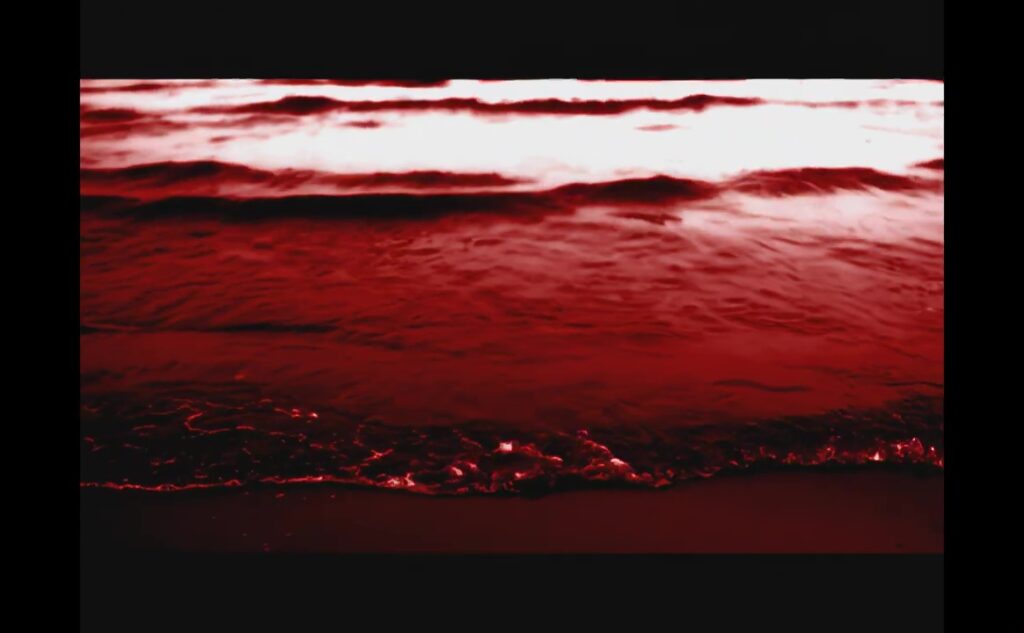Red Sea

Red Sea
Single-channel video, colour, sound
In Red Sea, Barbara Agreste presents an uncompromising vision of water turned crimson, an ocean transformed into a silent testament to unseen catastrophe. Shot before the artist consciously recognised the migratory tragedies unfolding in the Mediterranean, the work demonstrates her practice as an intuitive and prophetic witness: her images emerge not merely from observation but from a deeper perceptual realm in which art becomes a conduit for truths unspoken, or not yet spoken, in public discourse.
The video reveals a sea thick with red – both beautiful and harrowing. Floating upon its surface are shattered pieces of paper, drifting like remnants of letters never delivered, testimonies never received. They gather at the shorelines of Italy, evoking the intimate and political dimensions of migration, loss, and erasure. The waters conceal their histories even as they wash their traces ashore.
Amidst these waves appears the figure of a girl. She picks up ropes, untangles their knots, and holds them towards the viewer. Her gestures suggest an attempt at rescue, pulling an unseen presence back from drowning. Yet they also convey a ritual act of deciphering, as if by unravelling the tangled threads she might piece together what has been silenced: the lives ended at sea, the violence of border regimes, and the collapse of hospitality in a continent that once mythologised itself as cradle of civilisation.
Red Sea situates itself within a broader historical continuum of artistic engagement with prophetic imagery and social witnessing. From classical tragedies warning of human hubris to contemporary video art exploring ecological and political crises, Agreste’s work aligns with traditions that view the artist as seer: a figure burdened by insight into structural violence, forced to navigate the ethical complexities of seeing too much, too soon.
The philosophical undercurrent in Red Sea is that of art as omen – art as a manifestation of the real before it becomes legible to the collective. This anticipatory quality carries its own trauma: the artist is halted by the weight of her revelations, unable to continue producing until meaning can be integrated into life once more. For Agreste, the act of creation is never aesthetic alone; it is an ethical encounter with forces that shape human existence beyond visibility or control.
At its core, Red Sea is a meditation on the Mediterranean as both origin and grave: cradle of ancient maritime cultures, now a mass burial site for bodies denied refuge by contemporary geopolitics. It is an elegy for a civilisation unmade by its own neglect, and a visual hymn to the unknown lives that drift, unclaimed and unspoken, beneath the sea’s deceptive surface.
In the end, Agreste offers neither resolution nor comfort. The ropes remain untangled but coiled; the letters remain unread; the sea remains red. The work stands as a testament to art’s silent, fearsome power: it reveals, it warns, and it mourns – leaving the viewer with the burden of witnessing what cannot be unseen.